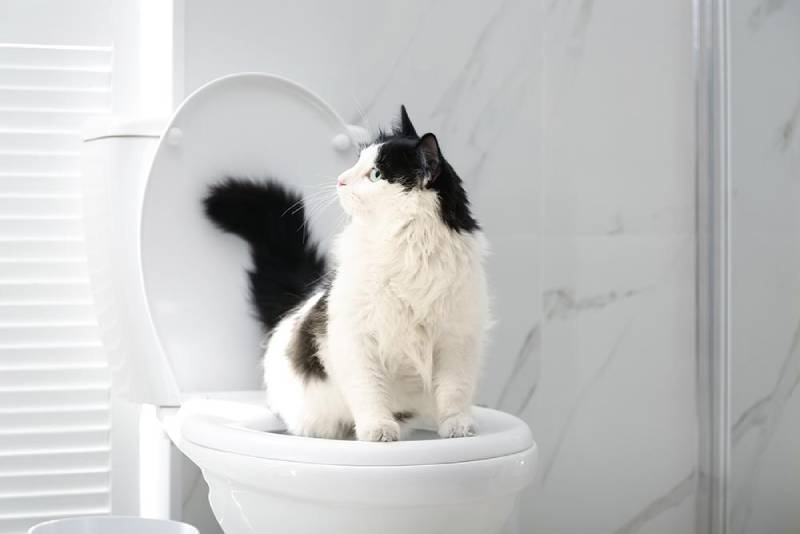Avoid Clogs and Damage: Never Flush Cat Poop Down Your Toilet - Expert Insights
Avoid Clogs and Damage: Never Flush Cat Poop Down Your Toilet - Expert Insights
Blog Article
We've come across this article about Don’t flush cat feces down the toilet listed below on the internet and accepted it made good sense to discuss it with you on my blog.

Intro
As feline owners, it's important to bear in mind exactly how we take care of our feline friends' waste. While it may appear practical to flush pet cat poop down the toilet, this method can have damaging repercussions for both the atmosphere and human health.
Alternatives to Flushing
Fortunately, there are more secure and extra accountable means to throw away feline poop. Think about the following options:
1. Scoop and Dispose in Trash
One of the most common technique of disposing of pet cat poop is to scoop it into an eco-friendly bag and throw it in the trash. Be sure to make use of a specialized clutter scoop and dispose of the waste immediately.
2. Use Biodegradable Litter
Choose eco-friendly pet cat litter made from materials such as corn or wheat. These clutters are environmentally friendly and can be securely disposed of in the garbage.
3. Hide in the Yard
If you have a backyard, take into consideration burying feline waste in an assigned location far from vegetable yards and water resources. Make sure to dig deep adequate to prevent contamination of groundwater.
4. Mount a Pet Waste Disposal System
Purchase an animal garbage disposal system especially made for cat waste. These systems use enzymes to break down the waste, lowering odor and ecological impact.
Health Risks
Along with ecological issues, purging feline waste can likewise pose wellness risks to humans. Cat feces might include Toxoplasma gondii, a bloodsucker that can trigger toxoplasmosis-- a potentially serious health problem, specifically for expectant females and individuals with damaged immune systems.
Ecological Impact
Flushing feline poop introduces dangerous microorganisms and bloodsuckers into the water supply, presenting a substantial threat to water ecosystems. These contaminants can adversely influence marine life and compromise water high quality.
Final thought
Responsible pet ownership extends beyond supplying food and shelter-- it also involves appropriate waste monitoring. By refraining from flushing cat poop down the toilet and going with alternate disposal methods, we can decrease our environmental impact and secure human health.
Why Can’t I Flush Cat Poop?
It Spreads a Parasite
Cats are frequently infected with a parasite called toxoplasma gondii. The parasite causes an infection called toxoplasmosis. It is usually harmless to cats. The parasite only uses cat poop as a host for its eggs. Otherwise, the cat’s immune system usually keeps the infection at low enough levels to maintain its own health. But it does not stop the develop of eggs. These eggs are tiny and surprisingly tough. They may survive for a year before they begin to grow. But that’s the problem.
Our wastewater system is not designed to deal with toxoplasmosis eggs. Instead, most eggs will flush from your toilet into sewers and wastewater management plants. After the sewage is treated for many other harmful things in it, it is typically released into local rivers, lakes, or oceans. Here, the toxoplasmosis eggs can find new hosts, including starfish, crabs, otters, and many other wildlife. For many, this is a significant risk to their health. Toxoplasmosis can also end up infecting water sources that are important for agriculture, which means our deer, pigs, and sheep can get infected too.
Is There Risk to Humans?
There can be a risk to human life from flushing cat poop down the toilet. If you do so, the parasites from your cat’s poop can end up in shellfish, game animals, or livestock. If this meat is then served raw or undercooked, the people who eat it can get sick.
In fact, according to the CDC, 40 million people in the United States are infected with toxoplasma gondii. They get it from exposure to infected seafood, or from some kind of cat poop contamination, like drinking from a stream that is contaminated or touching anything that has come into contact with cat poop. That includes just cleaning a cat litter box.
Most people who get infected with these parasites will not develop any symptoms. However, for pregnant women or for those with compromised immune systems, the parasite can cause severe health problems.
How to Handle Cat Poop
The best way to handle cat poop is actually to clean the box more often. The eggs that the parasite sheds will not become active until one to five days after the cat poops. That means that if you clean daily, you’re much less likely to come into direct contact with infectious eggs.
That said, always dispose of cat poop in the garbage and not down the toilet. Wash your hands before and after you clean the litter box, and bring the bag of poop right outside to your garbage bins.
https://trenchlesssolutionsusa.com/why-cant-i-flush-cat-poop/

I am very serious about How to Dispose of Cat Poop and Litter Without Plastic Bags and I hope you liked the entire entry. Are you aware of another person who is intrigued by the niche? Please feel free to share it. We take joy in reading our article about Don’t flush cat feces down the toilet.
Book Your Installation Report this page